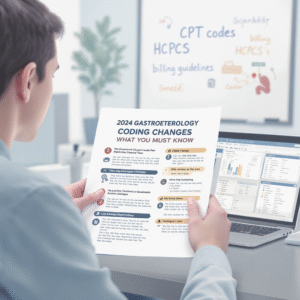Why Your A/R Follow-Up Process is Failing
A/R Follow-Up Process
A/R Follow-Up Process
Accounts receivable (A/R) management is the financial heartbeat of any business. Yet many organizations struggle with ineffective follow-up processes that result in delayed payments, compromised cash flow, and strained customer relationships. If your company is experiencing these challenges, it’s time to critically examine your A/R follow-up strategy.

The Critical Importance of A/R Follow-Up
Effective accounts receivable follow-up isn’t simply an administrative function—it’s a fundamental strategy that directly impacts your company’s financial health. A poor process can result in:
- Compromised cash flow: Late payments create gaps in available cash, limiting operational capacity
- Increased bad debt: Without proper follow-up, more accounts become uncollectible over time
- Elevated operational costs: Manual and inefficient processes consume valuable resources
- Deteriorated customer relationships: Poorly managed follow-up can damage important commercial relationships
Warning Signs: Is Your Process Failing?
1. Rising Days Sales Outstanding (DSO)
DSO measures how long it takes to convert sales into cash. If this metric is consistently growing, it’s a clear signal that your follow-up process needs attention. An elevated DSO indicates customers are taking longer to pay, which could be due to ineffective collection processes or inadequate payment terms.
2. Lack of Account Status Visibility
If your team can’t quickly provide updated status on accounts receivable, there’s a fundamental system problem. Lack of visibility prevents informed decision-making and timely follow-up.
3. Inconsistent Customer Communication
The absence of a clear protocol for contacting customers results in sporadic and ineffective communications. This not only confuses customers but also projects an unprofessional image of the company.
4. Over-Reliance on Manual Processes
If your team still depends on spreadsheets, undocumented phone calls, and ad-hoc follow-ups, you’re losing efficiency and increasing the risk of errors.
Most Common A/R Process Failures
Lack of Automation
In the digital age, many companies continue operating with obsolete manual processes. Automation isn’t a luxury—it’s a necessity for maintaining competitiveness. Automated systems can:
- Send scheduled payment reminders
- Generate aging reports automatically
- Alert about at-risk accounts
- Integrate data from multiple sources
Failure to Segment Customers
Not all customers are equal, and treating them as such is a costly mistake. Effective segmentation should consider:
- Payment history: Punctual customers versus those with a history of late payments
- Business volume: High-value customers require a more personalized approach
- Industry type: Different sectors have distinct payment cycles
- Geographic location: Payment practices vary by region

Ineffective Communication
Many companies use a one-size-fits-all approach for all collection communications. This strategy ignores individual customer preferences and can be counterproductive. Effective communication should be:
- Personalized: Specifically directed to the customer and their situation
- Professional: Maintaining respect and professional courtesy
- Clear: With specific information about amounts, dates, and next steps
- Consistent: Following a predictable schedule
Inadequate Metrics
Without the right metrics, it’s impossible to measure success or identify areas for improvement. Companies should monitor:
- DSO (Days Sales Outstanding): Average time to collect
- Collection rate: Percentage of accounts successfully collected
- Account aging: Distribution of accounts by overdue time
- Collection cost: Resources invested in the follow-up process
Contributing Factors to Failure
Lack of Dedicated Resources
Many companies underestimate the resources needed for effective A/R follow-up. Assigning this responsibility as a secondary task to already overloaded employees is a recipe for failure. A/R follow-up requires:
- Dedicated and trained personnel
- Adequate technological tools
- Sufficient time for consistent follow-ups
- Authority to make collection decisions
Unclear Processes
Without standardized procedures, each team member may approach follow-up differently, resulting in inconsistencies and missed opportunities. Processes should clearly define:
- When to initiate follow-up
- Which communication methods to use
- Appropriate escalations
- Required documentation
Lack of Technology Integration
Isolated systems create information silos that prevent a complete view of the customer. Integration between billing, CRM, and accounting systems is essential for effective follow-up.
Resistance to Change
Many organizations resist modernizing their processes due to fear of change or required investment. This resistance can be costly long-term, as obsolete processes become increasingly inefficient.

Strategies to Transform Your A/R Process
Advanced Technology Implementation
Modern technology offers powerful tools to optimize A/R follow-up:
- A/R management software: Centralizes all information and automates routine processes
- Artificial intelligence: Predicts payment patterns and identifies at-risk accounts
- Customer portals: Facilitate payment and communication
- Predictive analytics: Helps identify problems before they worsen
Standardized Process Development
Creating clear and consistent procedures is fundamental:
- Define follow-up triggers: Establish when and how to initiate the process
- Create communication templates: Develop effective messages for different situations
- Establish escalations: Define when and how to intensify collection efforts
- Document all interactions: Maintain a complete record of communications
Team Training
Investing in staff training is crucial for success:
- Communication skills: Train in negotiation and effective communication techniques
- Product knowledge: Ensure complete understanding of terms and conditions
- Technology use: Train in efficient use of available tools
- Conflict resolution: Develop skills to handle difficult situations
Focus on Prevention
It’s more efficient to prevent collection problems than to solve them:
- Rigorous credit evaluation: Analyze payment capacity before extending credit
- Clear payment terms: Establish expectations from the start
- Accurate and timely billing: Avoid disputes due to errors
- Proactive communication: Maintain constant dialogue with customers
Measurement and Continuous Optimization
Establishing Relevant KPIs
Define and monitor key performance indicators:
- Target DSO: Establish realistic but challenging goals
- Recovery rate: Percentage of overdue accounts collected
- Resolution time: Average duration of collection process
- Customer satisfaction: Measure impact on business relationships
Regular Results Analysis
Periodically review performance and adjust strategies:
- Monthly trend analysis: Identify patterns and changes
- Difficult case reviews: Learn from complex situations
- Team feedback: Incorporate frontline staff perspectives
- Industry benchmarking: Compare with industry standards

The Technology Factor: Embracing Digital Transformation
Cloud-Based Solutions
Modern cloud-based A/R management systems offer several advantages:
- Real-time access: Team members can access information from anywhere
- Scalability: Systems can grow with your business
- Cost-effectiveness: Reduced IT infrastructure costs
- Automatic updates: Always have the latest features and security patches
Integration Capabilities
Choose systems that integrate seamlessly with existing infrastructure:
- ERP integration: Connect with enterprise resource planning systems
- CRM connectivity: Leverage customer relationship data
- Banking integration: Facilitate automatic payment matching
- Reporting tools: Generate comprehensive analytics and insights
Mobile Accessibility
In today’s mobile world, A/R teams need access to information on the go:
- Mobile apps: Allow field representatives to update account status immediately
- Push notifications: Alert team members to urgent situations
- Offline capabilities: Ensure productivity even without internet connection
Building a Customer-Centric Approach
Understanding Customer Perspectives
Successful A/R follow-up requires understanding why customers delay payments:
- Cash flow challenges: Customers may be experiencing their own financial difficulties
- Billing disputes: Errors or disagreements about charges
- Process complications: Complex payment procedures on the customer’s end
- Communication gaps: Lack of clarity about payment terms or procedures
Flexible Payment Solutions
Offering multiple payment options can significantly improve collection rates:
- Online payment portals: Make it easy for customers to pay electronically
- Payment plans: Allow customers to spread payments over time
- Multiple payment methods: Accept credit cards, ACH transfers, and mobile payments
- Early payment discounts: Incentivize prompt payment
The Human Element: Training and Development
Soft Skills Development
Technical skills alone aren’t sufficient for effective A/R follow-up:
- Empathy: Understanding customer situations builds trust
- Patience: Persistent but respectful follow-up yields better results
- Problem-solving: Finding creative solutions to payment challenges
- Negotiation: Reaching mutually beneficial agreements
Continuous Learning
The A/R landscape is constantly evolving:
- Industry workshops: Stay updated on best practices and legal requirements
- Peer networking: Learn from other professionals’ experiences
- Technology training: Keep skills current with evolving tools
- Legal updates: Understand changing regulations and compliance requirements
Measuring Success: Beyond Traditional Metrics
Customer Satisfaction Metrics
Track how your A/R processes affect customer relationships:
- Net Promoter Score (NPS): Measure customer loyalty and satisfaction
- Customer retention rates: Monitor if aggressive collection affects retention
- Complaint resolution time: Track how quickly payment disputes are resolved
- Repeat business metrics: Ensure collection efforts don’t harm future sales

Efficiency Indicators
Measure how well your resources are being utilized:
- Cost per dollar collected: Calculate the efficiency of your collection efforts
- Staff productivity: Track accounts handled per team member
- Process cycle time: Measure how long each step takes
- Error rates: Monitor accuracy in billing and communication
Future-Proofing Your A/R Process
Emerging Technologies
Stay ahead of the curve by considering future innovations:
- Machine learning: Advanced algorithms that predict payment behavior
- Blockchain: Secure and transparent transaction records
- Voice analytics: Understanding customer sentiment during calls
- Robotic process automation: Handling routine tasks automatically
Regulatory Compliance
Ensure your processes meet evolving legal requirements:
- Data privacy laws: Protect customer information appropriately
- Fair debt collection practices: Follow legal guidelines for collection activities
- Industry-specific regulations: Comply with sector-specific requirements
- International considerations: Understand cross-border collection rules
Conclusion: The Path to Success
Transforming a failing A/R follow-up process requires commitment, investment, and patience. However, the benefits are significant: improved cash flow, stronger customer relationships, and more efficient operations.
The first step is recognizing that a problem exists and having the willingness to address it. Next, it’s necessary to honestly evaluate current processes, identify gaps, and develop a comprehensive improvement plan.
Implementation should be gradual but consistent, with continuous monitoring and adjustments as needed. Remember that A/R optimization isn’t a one-time project—it’s an ongoing process that requires constant attention and refinement.
With the right strategy, appropriate tools, and organizational commitment, your accounts receivable follow-up process can transform from a weak point into a competitive advantage that drives growth and financial stability for your company.
Success in A/R follow-up isn’t just about collecting money—it’s about building a system that strengthens customer relationships while protecting the organization’s financial health. It’s an investment that pays dividends in both the short and long term.
The companies that thrive in today’s competitive landscape are those that view A/R management not as a necessary evil, but as a strategic function that contributes directly to business success. By addressing the common failures outlined in this article and implementing the suggested improvements, your organization can join the ranks of those who have mastered this critical business function.



